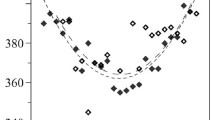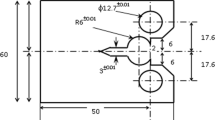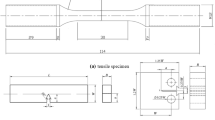Abstract
A critical issue in making failure assessments for brittle fracture is the temperature dependence of the fracture toughness transition curve. Normally, fracture mechanical tests are performed only at some predescribed temperature like -10°C. This is also the way the steel producers usually present their data. For actual failure assessment this information is seldom adequate. Some kind of extrapolation of the fracture toughness values to higher or lower temperatures are often required. This can be achieved only if the shape of the fracture toughness transition curve is known. Several presently applied cleavage fracture models yield that the fracture toughness should be inversely related to the materials yield stress. Thus these models indicate that the fracture toughness transition curve shape should be related to the temperature dependence of the yield stress. In order to clarify the issue, a micromechanism based statistical cleavage fracture model is applied to analyze existing fracture toughness data. It is shown that the fracture toughness transition curve shape is really insensitive to the yield stress. Furthermore it is shown that the majority of ferritic steels have similar fracture toughness transition curve shapes, thus making it possible to describe all the steels fracture toughness temperature dependence with a single curve. Finally a theoretical reasoning for the observed behavior is given, based on the cleavage fracture model.
Access this chapter
Tax calculation will be finalised at checkout
Purchases are for personal use only
Preview
Unable to display preview. Download preview PDF.
Similar content being viewed by others
References
Ritchie, R.O., Knott, J.F. and Rice, J.R., On the Relationship Between Critical Tensile Stress and Fracture Toughness in Mild Steel. J. Mech. Phys. Solids, 1973, 21, 395–410.
Pineau, A., Review of Fracture Micromechanisms and a Local Approach to Predicting Crack Resistance in Low Strength Steels. Advances in Fracture Research, 5th International Conference on Fracture, ed. D. Francois, vol. 2, 1981, pp. 553–77.
Törrönen, K., Wallin, K., Saario, T., Hänninen, H., Rintamaa, R. and Forstén, J., Optimization of Metallurgical Variables in Fracture Prevention. Nucl. Eng. Design, 1985, 87, 225–37.
Wallin, K., Saario, T. and Törrönen, K., Statistical Model for Carbide Induced Brittle Fracture in Steel. Metal Sci., 1984, 18, 13–6.
Wallin, K., Statistical Modelling of Fracture in the Ductile to Brittle Transition Region. Keynote lecture for: European Symposium on Elastic-Plastic Fracture Mechanics: Elements of Defect Assessment. Freiburg, FRG, 9.-12. 10. 1989, 25 p.
Sanz, G., Essai de Mise au Point D’une Méthode Quantitative de Choix des Qualités D’aciers vis-à-vis du Risque de Rupture Fragile. Revue de Métallurgie, 1980, 77, 621–42.
Stienstra, D.I.A., Stochastic micromechanical modeling of cleavage fracture in the ductile-brittle transition region. Dissertation, Texas A&M University, College Station, Texas, August 1990.
Author information
Authors and Affiliations
Editor information
Editors and Affiliations
Rights and permissions
Copyright information
© 1991 Elsevier Science Publishers Ltd
About this chapter
Cite this chapter
Wallin, K. (1991). Fracture Toughness Transition Curve Shape for Ferritic Structural Steels. In: Teoh, S.H., Lee, K.H. (eds) Fracture of Engineering Materials and Structures. Springer, Dordrecht. https://doi.org/10.1007/978-94-011-3650-1_10
Download citation
DOI: https://doi.org/10.1007/978-94-011-3650-1_10
Publisher Name: Springer, Dordrecht
Print ISBN: 978-1-85166-672-0
Online ISBN: 978-94-011-3650-1
eBook Packages: Springer Book Archive




